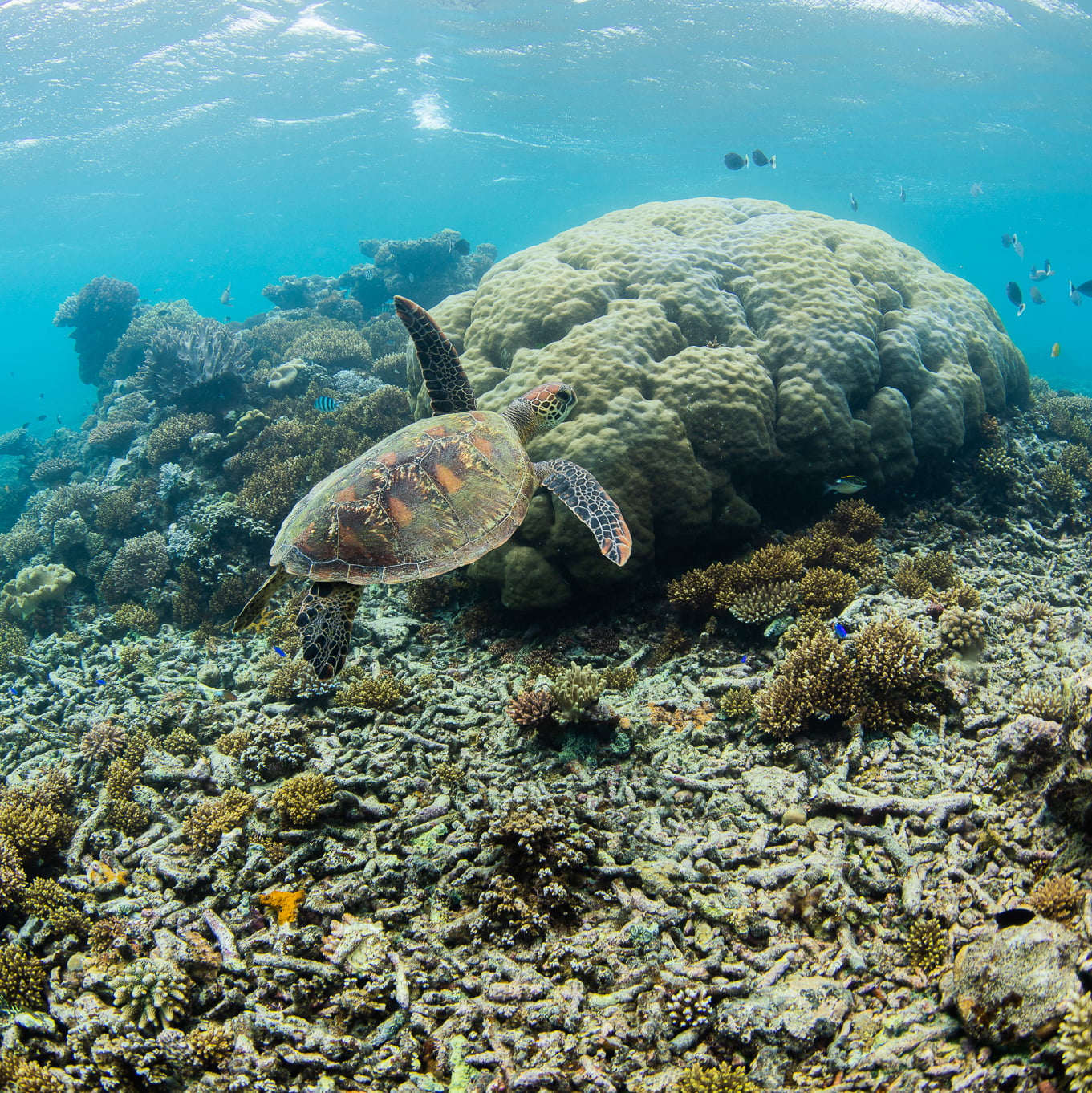Threats to the Reef
Climate change remains the greatest threat to the Great Barrier Reef, with mass bleaching and extreme weather events posing a major risk to the Reef's overall health. Crown-of-Thorns starfish outbreaks and water quality from land runoff also leave the Reef vulnerable.
Top takeaways to learn about what's happening to our Reef
There have been
Four mass bleaching events since 2016
A staggering
40% of the Reef’s coral loss is caused by Crown-of-Thorns starfish
Did you know?
The ocean has absorbed 90% of the warming caused by increased greenhouse gases
It starts on land
Every year, millions of tonnes of fine sediment flow from eroding land onto the Reef
Bleaching takes place when corals lose their vibrant colors and turn pale or white. It is primarily caused by rising ocean temperatures due to climate change.
When the water temperature increases, the symbiotic relationship between the coral polyps and the algae living within them, known as zooxanthellae, breaks down. This relationship is crucial for the health and survival of the coral reefs, as the algae provide the corals with essential nutrients through photosynthesis. However, under stressful conditions such as high temperatures, the corals expel the algae, leading to a loss of color and a weakened state.
Outbreaks of the coral-eating crown-of-thorns starfish (COTS) cause significant damage to coral reefs around the world and are one of the major causes of coral decline across the Great Barrier Reef. This species is actually native to the Reef, however their numbers have reached plague proportions in recent years requiring control measures to reduce coral loss.
Minimising the impact of COTS outbreaks is considered one of the most scalable and feasible direct management interventions currently available to enhance the Reef’s long-term health and resilience.

Every year, millions of tonnes of fine sediment flow from eroding land onto the Reef, choking fish, seagrass and coral, reducing the Reef’s ability to recover from the impacts of climate change. Exacerbating the problem is the loss of over 50% of our coastal wetlands, which help to filter excess nutrients from water before it enters the Reef lagoon.

Climate change remains the greatest threat to the Great Barrier Reef. Rising ocean temperatures due to global warming lead to increased instances of coral bleaching, and ocean acidification caused by the absorption of excess carbon dioxide hinders the ability of corals to build and maintain their calcium carbonate structures.
The intensification of weather events, such as cyclones and storms can causes extreme physical damage to the reef. The combined impacts of climate change on the Great Barrier Reef emphasise the urgent need for global action to reduce carbon emissions whilst scaling up conservation efforts to protect and conserve this delicate marine ecosystem.

Did you know the Great Barrier Reef as we know it today developed during the last period of sea level rise around 9,500 years ago?